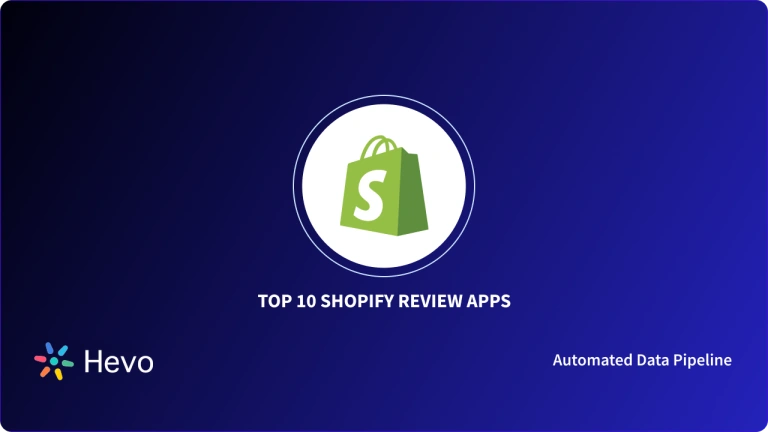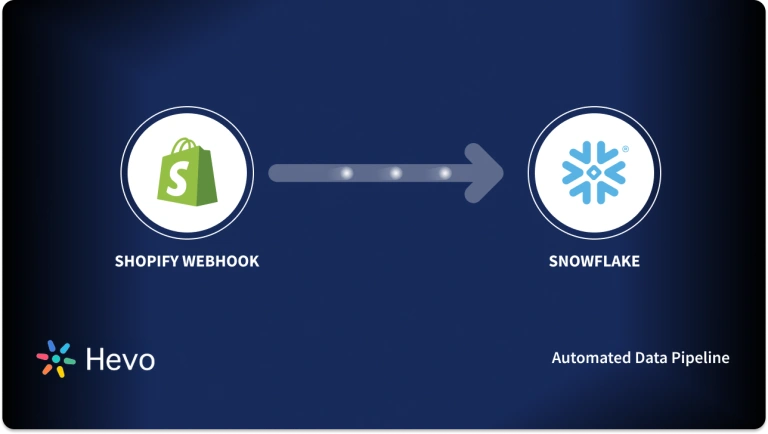In this guide, you’ll learn about Shopify APIs, their Key Types, Usage, and Rate limits. You’ll also see example queries for Shopify APIs. Read along to learn more about Shopify REST APIs!
Table of Contents
Introduction to Shopify
- Shopify is an E-commerce platform for businesses that don’t want to go through the hassle of building and designing a website.
- It allows users to build an online store and also sell offline with Shopify POS.
Hevo simplifies Shopify data migration by automating the extraction, transformation, and loading (ETL) process to any destination without the need for coding or manual management.
- No Data Loss—The Hevo architecture is fault-tolerant and allows the easy, reliable, and seamless transfer of data from Webhooks to any Data Warehouse without data loss.
- 100’s of Out-of-the-Box Integrations—The Hevo platform brings data from various sources, such as SDKs, Cloud Applications, Databases, and so on, into Data Warehouses and Databases.
- Automatic Schema Detection and Mapping—The schema of incoming data is scanned automatically. If changes are detected, they are handled seamlessly and incorporated into the Database or Data Warehouse.
- Exceptional Support – Hevo has 24×7 Technical support through emails, calls, and chat.
Experience seamless and efficient data migration from Shopify with Hevo—transforming your workflow with ease and reliability.
Get Started with Hevo for FreeWhat is REST API?
- REST API is an API that follows a set of rules for an application and services to communicate with each other.
- For an API to be considered RESTful it has to conform to some rules such as:
- Statelessness
- Cacheable
- Decoupled
- Layered
What is Shopify API
- Shopify APIs allow developers to build and launch Shopify Apps to improve the lives of merchants and their businesses.
Types of Shopify APIs
1) Admin API
- The Admin API is useful for adding features to your Shopify store’s user experience. The Shopify Admin API is versioned and supports both GraphQL and REST.
2) Storefront API
- With Shopify Storefront API, store owners have complete creative control like modifying templates and accessing Abandoned Cart Recovery over their E-commerce website.
3) Payment Apps API
- The Payments Apps API enables Shopify partners to access their Shopify Payments account and payments app configuration data.
4) Partner API
- The Partner API enables Shopify Partners to access the data found in their Partner Dashboard.
- This access allows partners to scale their business effectively by automating their front- and back-office operations.
5) Ajax API
- The Ajax API provides a suite of lightweight Shopify REST API endpoints for the development of Shopify themes.
6) Section Rendering API
- Using an AJAX and the Section Rendering API, users can request the HTML markup for theme sections.
- It allows store owners to update page content without reloading the entire page by fetching and dynamically replacing only certain elements.
7) Customer Privacy API
- The customer privacy API enables developers to read and write cookies related to a buyer’s consent to be tracked.
- It’s a browser-based JavaScript API that is implemented as a property on the global window.
8) Messaging API
- Messaging API is used to send messages to the Shopify Inbox which is a web, Android, and iOS App that allows Shopify merchants to centralize their business conversations from SMS and messaging apps like Facebook Messenger.
Key Usage of Shopify APIs
1) Shopify API Authentication
You can authenticate apps and services with Shopify’s platform in one of the two ways:
- OAuth
- Basic HTTP authentication
Users can access tokens in one of the two modes:
- Online access: These are linked to an individual user on a store, but the access token’s lifespan matches the lifespan of the user’s web session. It’s used when a user is interacting with your app through the web.
- Offline access: These are meant for long-term access to a store, and no user interaction is involved. It’s ideal for background work in response to Webhooks.
2) Shopify API Access Scopes
- In the App Authorization Process, users have to specify the parts that they require access to. An app can request any unauthenticated or authenticated access.
- All the access scopes are available with AccessScope resource, available through the Admin API in GraphQL and Shopify REST APIs.
3) Shopify API versioning
- API versioning allows to continuously change the platforms by offering third-party developers a predictable path for feature upgrades and deprecations.
4) Shopify API Rate Limits
- All Shopify APIs are rate-limited to ensure the platform remains stable and fair for all users.
- They impose various rate limits and employ industry-standard techniques for caching results, limiting calls, and responsibly retrying requests.
a) GraphQL API Rate Limits
- For GraphQL Admin API calls, limits are based on calculated query costs, which means rather than considering the number of requests, users should consider the cost of requests over time.
- The rate limits are based on the combination of the store and apps, ensuring that even on the same store, calls from one app don’t affect the rate limits.
- Similarly, it ensures that even the same app calls to one store don’t affect the rate limits of another store.
b) Shopify REST API Rate Limits
- The Shopify REST API calls are governed by request-based limits, resource-based rate limits, and throttles.
- Users have to consider the total number of API calls your app makes. They are also based on the combination of the app and store, and calls from one app/store don’t affect the other.
c) Storefront API Rate Limits
- Time-based limits govern calls to the Shopify Storefront API. Rather than considering the number of requests, users have to consider the time your requests take to complete.
d) Resource-Based Rate Limits
- Both Shopify REST API and GraphQL Admin API resources have an additional throttle for a store with over 50,000 product variants.
- After stores reach this threshold, you can create no more than 1,000 new variants per day.
5) Pagination
- REST endpoints and GraphQL supports cursor-based pagination. This can be used to retrieve set of results from a connection.
- If you use a connection to retrieve a list of resources then arguments are used to specify the number of results to retrieve.
Shopify API Example Queries
Admin API Examples
- The following query can be used to create a customer and return their customer Id.
- The following query can be used to create an automatic Buy One Get One discount that will be applied to a single product any time.
- The following query can be used to create marketing events.
Storefront API Examples
- The following query can be used to return the first two products as product variants from your store and specifies the ID as the payload object.
- You can use customerAccessTokenCreate mutation to create a customer access token.
- You can use the customerRecover mutation to implement a password recovery flow on your custom storefront.
Learn More About: How to Load Data from Shopify to MYSQL
Conclusion
Discover the steps to start developing for Shopify, including building apps and themes for the Shopify ecosystem. Find out more in the Shopify Developer guide.
Shopify REST APIs allow developers to design integrations that will enhance the effectiveness of merchants’ online/offline payments, marketing, product management, and listing products on a global marketplace.
This blog introduced you to Shopify APIs and gives you an idea of how Shopify offers a suite of APIs that allow developers to extend the platform’s built-in features.
You can try Hevo’s 14-day free trial. You can also have a look at the unbeatable pricing that will help you choose the right plan for your business needs!
FAQs
1. Does Shopify use the REST API?
Yes, Shopify provides a REST API for accessing and managing store da
2. What type of API does Shopify use?
Shopify uses both REST and GraphQL APIs. The REST API is traditional and straightforward, while the GraphQL API allows for more efficient and flexible queries.
3. How to implement the Shopify API?
Implement the Shopify API by creating a private or public app in the Shopify Admin, generating API credentials, and using these credentials to make HTTP requests to Shopify’s endpoints.





